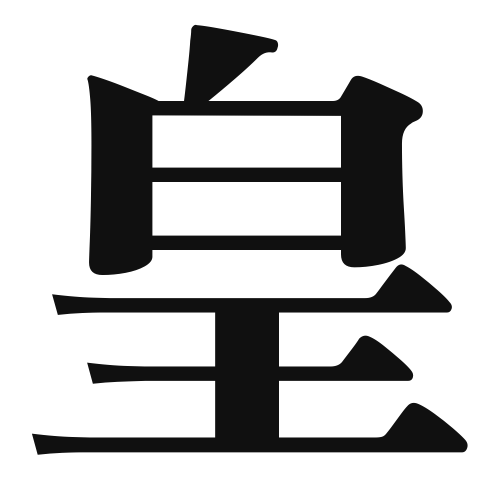1. Overview of Meaning
The kanji “皇” (kō) primarily means “emperor” or “sovereign.” It represents the highest authority in a monarchy and is often associated with imperial power and dignity.
2. Formation and Radical
Formation of the Kanji: The kanji “皇” is a phonetic-ideographic character (形声文字). It combines elements that convey both sound and meaning. The left part, “口” (kuchi), suggests a connection to speech or authority, while the right part, “光” (hikari), symbolizes light or brightness, indicating the noble status of the emperor.
Radical: The radical for “皇” is “王” (ō), which means “king” and is often associated with royalty and authority.
3. Examples of Usage
Common Words and Phrases:
- 皇帝 (kōtei) – emperor
- 皇室 (kōshitsu) – imperial family
- 皇国 (kōkoku) – imperial nation
Example Sentences in Daily Conversation:
- 日本の皇帝は歴史的に重要な役割を果たしてきました。
(The emperor of Japan has played a historically significant role.) - 皇室の行事は多くの人々にとって特別な意味を持っています。
(Events of the imperial family hold special significance for many people.)
4. Synonyms and Antonyms
Similar Kanji:
- 王 (ō) – king: While both “皇” and “王” relate to royalty, “王” typically refers to a king, who may not have the same level of authority as an emperor.
Antonyms:
- 民 (min) – people: This kanji represents the common people, contrasting with the elevated status of “皇.”
5. Cultural and Historical Background
Connection to Japanese Culture: The concept of “皇” is deeply rooted in Japanese history, where the emperor is seen as a symbol of the nation and its continuity. The Japanese imperial family claims descent from the sun goddess Amaterasu, emphasizing their divine right to rule.
Proverbs and Idioms:
- 「天皇の御代にあたる」 (tennō no mitai ni ataru) – to be in the era of the emperor, often used to signify a time of peace and prosperity.
